Join us for conversations that inspire, recognize, and encourage innovation and best practices in the education profession.
Available on Apple Podcasts, Spotify, Google Podcasts, and more.
In this section, you will watch Dr. Paratore’s lecture on using assessment to guide instruction.
Print Dr. Paratore’s Assessment Lecture Poster (PDF). Use the poster to take notes on the lecture.
In this video segment, Dr. Paratore presents the principles of effective classroom assessment. The lecture emphasizes the importance of ongoing assessment to plan instruction and to address the needs of all students. The workshop participants develop a semantic map that relates the assessment principles to their own practices.
An accompanying lecture transcript (PDF) is also available.
Video Segment – Dr. Paratore’s Lecture
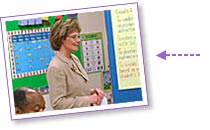 Find this segment approximately 2 minutes and 55 seconds after the beginning of the video. Watch for about 12 1/2 minutes.
Find this segment approximately 2 minutes and 55 seconds after the beginning of the video. Watch for about 12 1/2 minutes.
After watching the lecture, review your notes and consider these questions:
Now return to your Assessment Semantic Map and add any new ideas that have come from watching the video segment.
In this section, you will relate Dr. Paratore’s lecture and your readings to assessment practices in classroom excerpts.
Now you will observe teachers in kindergarten, first grade, and second grade as they assess their students’ reading. As you watch, note the different instructional contexts and classroom routines that allowed the teachers to assess individual student performance.
Video Segment – Student Assessment Classroom Excerpts
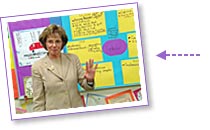 Find this segment approximately 15 minutes and 15 seconds after the begining of the video. Watch for about 6 1/2 minutes.
Find this segment approximately 15 minutes and 15 seconds after the begining of the video. Watch for about 6 1/2 minutes.
After watching the classroom excerpts, consider these questions:
In this section, you will watch the workshop participants discuss the classroom excerpts.
Following the classroom excerpts, the workshop participants discuss the lessons. Compare your ideas with theirs.
Video Segment – Discussion
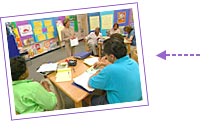 Find this segment approximately 21 minutes and 40 seconds after the beginning of the video. Watch for about 10 minutes.
Find this segment approximately 21 minutes and 40 seconds after the beginning of the video. Watch for about 10 minutes.
After watching the workshop participants’ discussion, consider these questions:
In this section, you will relate Dr. Paratore’s lecture and your readings to assessment practices in classroom excerpts.
Now watch first-grade teacher Hildi Perez as she assesses one student in the beginning of the year and then four months later. She uses both formal and informal assessment practices to learn and document information about this child’s reading. As you watch, note the classroom contexts Ms. Perez uses for her assessments and the information she obtains from each assessment.
Video Segment – Ms. Perez’s Classroom Assessment
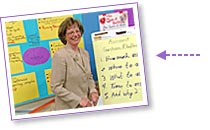 Find this segment approximately 31 minutes and 35 seconds after the beginning of the video. Watch for about 7 minutes.
Find this segment approximately 31 minutes and 35 seconds after the beginning of the video. Watch for about 7 minutes.
After watching the classroom excerpts, consider these questions:
Optional Viewing
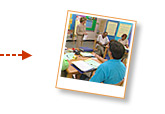 You may want to watch the workshop participants discuss Ms. Perez’s assessment practices. Find this segment approximately 38 minutes and 25 seconds after the beginning of the video. Watch for about 8 minutes.
You may want to watch the workshop participants discuss Ms. Perez’s assessment practices. Find this segment approximately 38 minutes and 25 seconds after the beginning of the video. Watch for about 8 minutes.